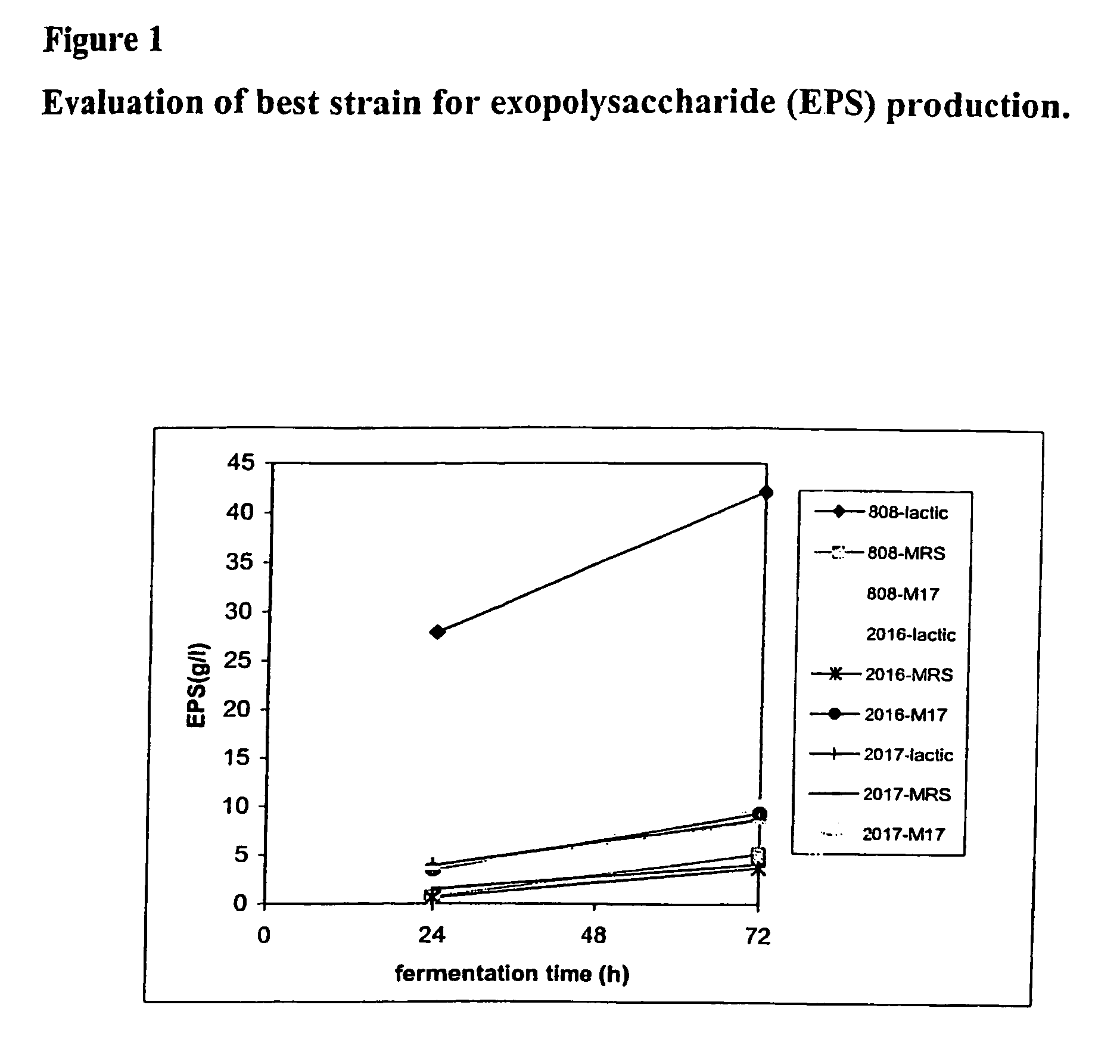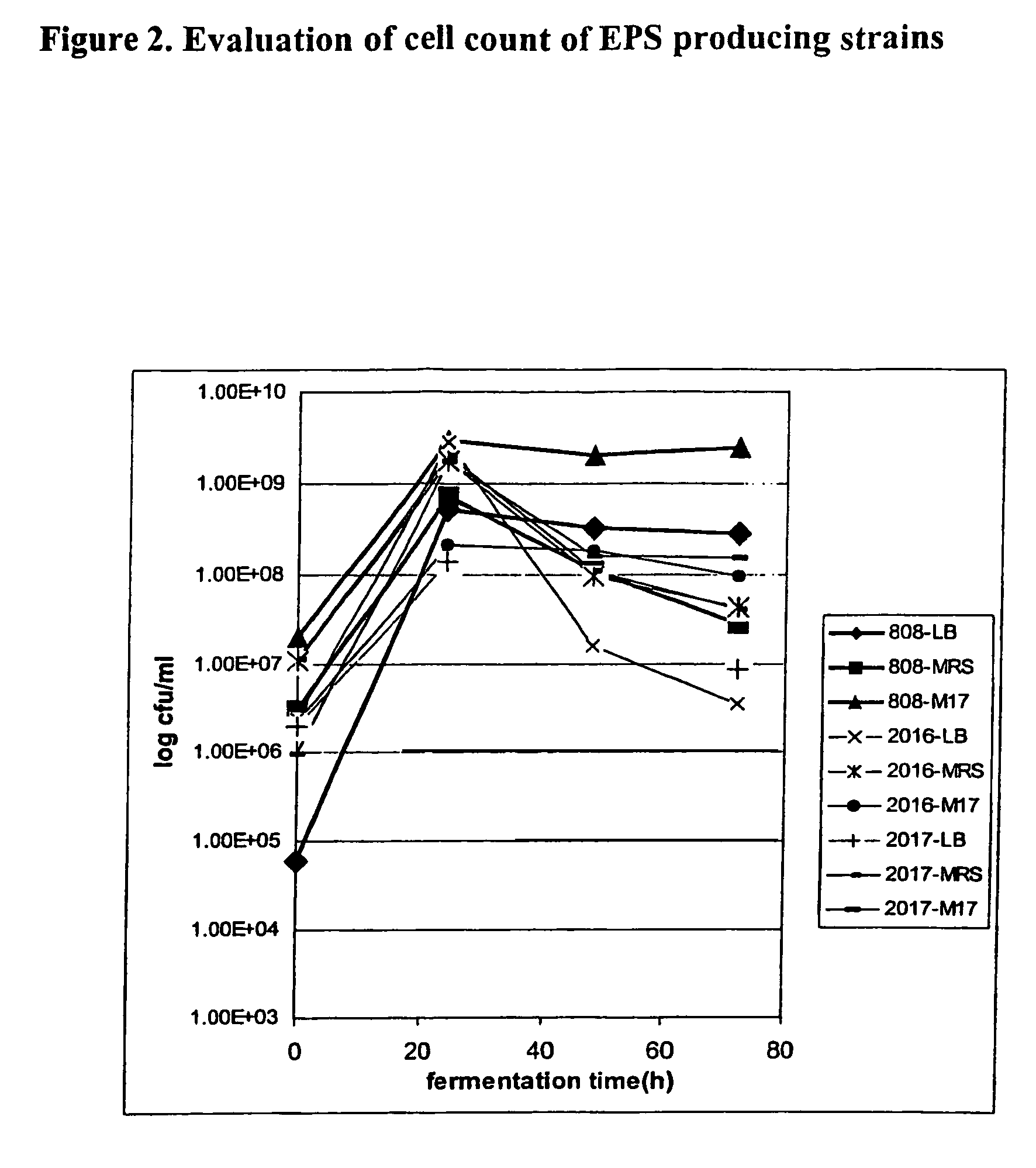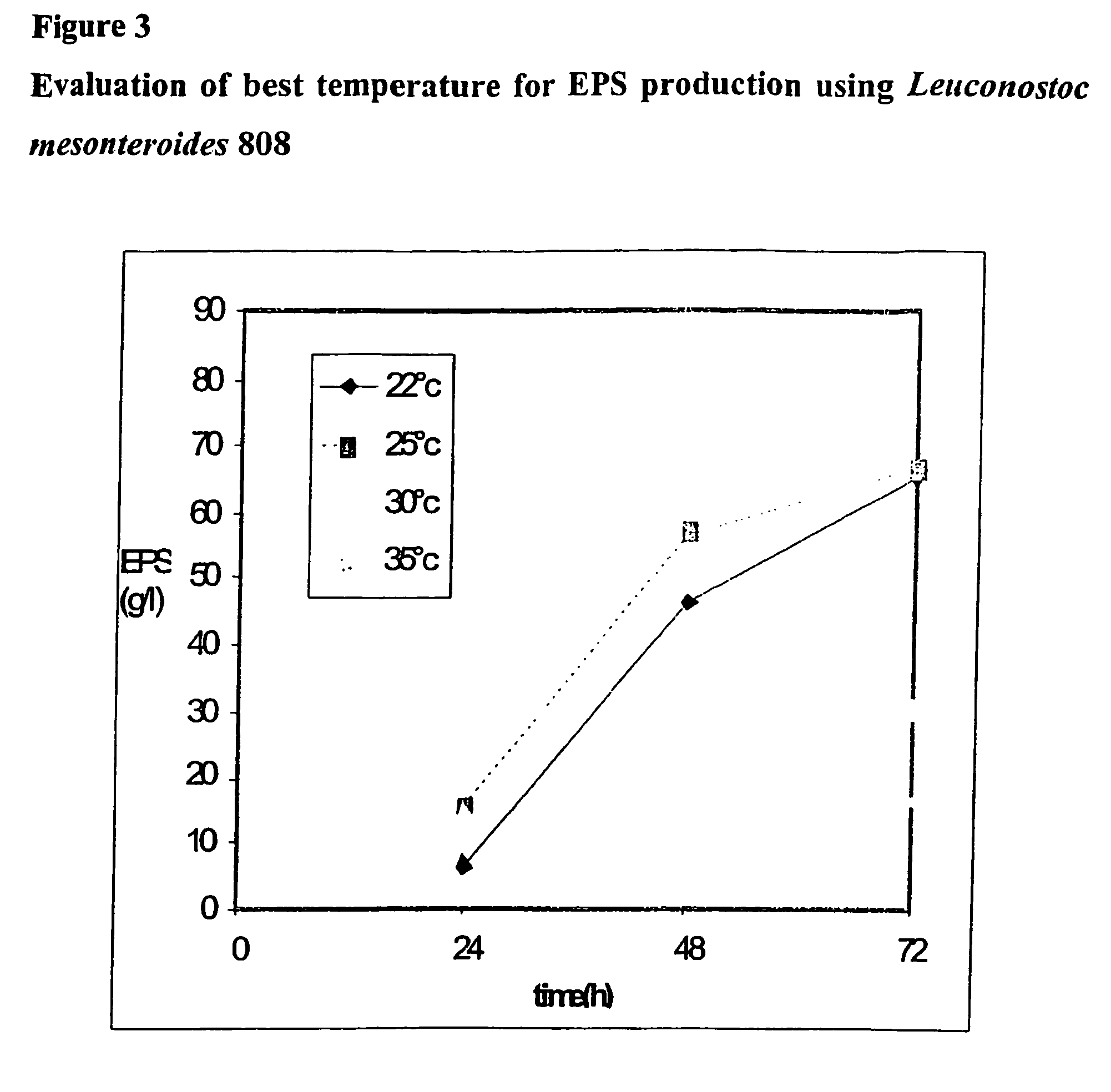Composition
a technology of composition and ice crystals, applied in the field of composition, can solve the problems of affecting the composition's viscosity, affecting the taste of the product, and the hlb value may not always be a reliable guide for emulsifier selection, so as to improve the taste, taste, texture, and texture of the product. , to achieve the effect of reducing the lactose level in the product, modulating the whey concentration and viscosity
- Summary
- Abstract
- Description
- Claims
- Application Information
AI Technical Summary
Benefits of technology
Problems solved by technology
Method used
Image
Examples
example 1
[0249]A number of different strains were screened in order to find a lactic acid bacterial strain capable of producing EPS. An overnight pre-culture was used to inoculate a fermentation chamber containing 200 ml of lactic growth medium (lactic 100b). The culture was incubated for 72 hours at 30° C. without stirring. The ability of each strain to produce EPS was tested at 24 and 72 hours. The results on FIG. 1 show that Leuconostoc mesenteroides 808-lactic strain at 24 hours produced approximately 28 g / l EPS and at 72 hours produced approximately 43 g / l EPS (see FIG. 1).
[0250]Further screening of different lactic acid microorganisms on sucrose agar showed that Lactobacillus sake spp., Lactobacillus plantarum spp. or Lactobacillus salivarium spp. were positive for EPS production (see below).
example 2
[0251]In this example the cell number of EPS producing cells was evaluated. Thus, an overnight pre-culture of each lactic acid bacterial strain was used to inoculate a fermentation chamber containing 200 ml of lactic growth medium (lactic 100b). Each culture was then incubated for 72 hours at 30° C. without stirring. The results show that the lactic acid micro-organism Leuconostoc mesenteroides 808 strain is capable of maintaining cell numbers at 48 and 72 hour of fermentation higher than any of the other tested strains (see FIG. 2).
example 3
[0252]The temperature at which Leuconostoc mesenteroides 808 strain produced optimum levels of EPS was tested. An overnight pre-culture of Leuconostoc mesenteroides 808 was used to inoculate four different fermentation chambers containing 200 ml of lactic growth medium (lactic 100b). After the inoculation, each fermentation chamber was incubated at 22° C., 25° C., 30° C. and 35° C. respectively without stirring. The pH at the start of the incubation was measured at a value of pH 7.4 and at the end of the fermentation period the pH was measured to be at a value of pH 4.1. The results presented in FIG. 3 show that Leuconostoc mesenteroides 808 strain produced maximum levels of EPS at 25° C.
PUM
| Property | Measurement | Unit |
|---|---|---|
| pH | aaaaa | aaaaa |
| pH | aaaaa | aaaaa |
| pH | aaaaa | aaaaa |
Abstract
Description
Claims
Application Information
 Login to View More
Login to View More - R&D
- Intellectual Property
- Life Sciences
- Materials
- Tech Scout
- Unparalleled Data Quality
- Higher Quality Content
- 60% Fewer Hallucinations
Browse by: Latest US Patents, China's latest patents, Technical Efficacy Thesaurus, Application Domain, Technology Topic, Popular Technical Reports.
© 2025 PatSnap. All rights reserved.Legal|Privacy policy|Modern Slavery Act Transparency Statement|Sitemap|About US| Contact US: help@patsnap.com



